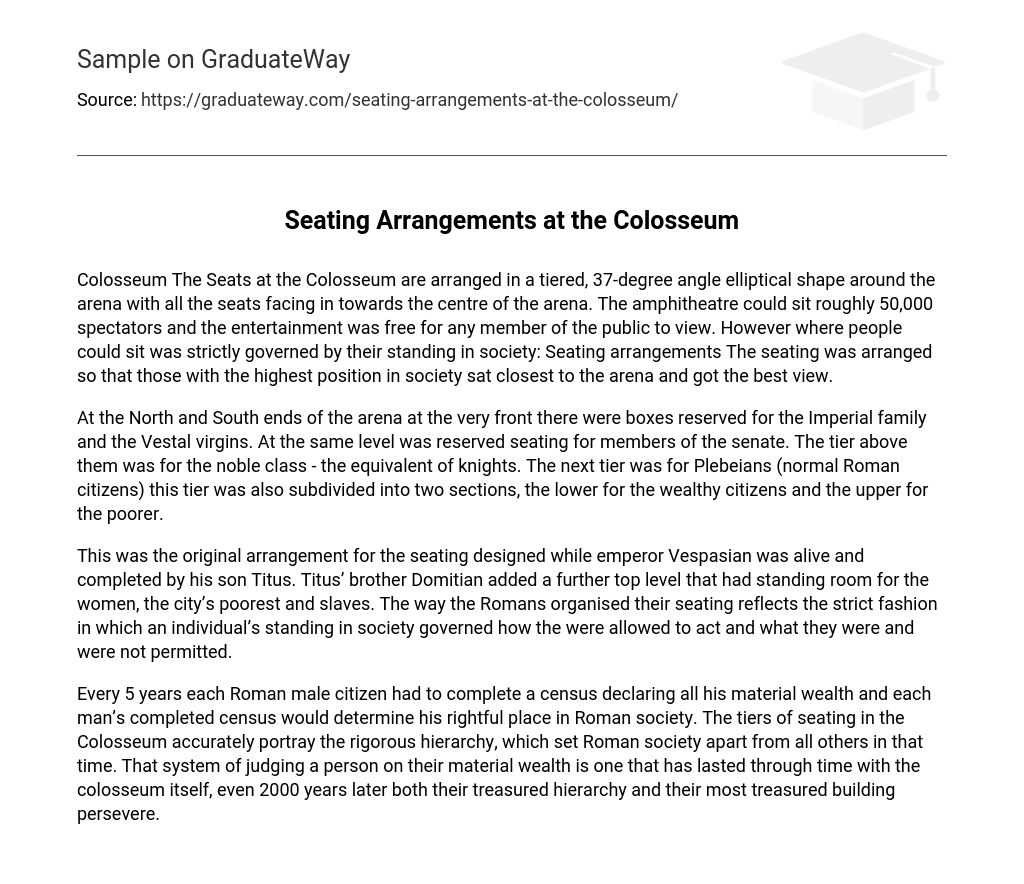Colosseum The Seats at the Colosseum are arranged in a tiered, 37-degree angle elliptical shape around the arena with all the seats facing in towards the centre of the arena. The amphitheatre could sit roughly 50,000 spectators and the entertainment was free for any member of the public to view. However where people could sit was strictly governed by their standing in society: Seating arrangements The seating was arranged so that those with the highest position in society sat closest to the arena and got the best view.
At the North and South ends of the arena at the very front there were boxes reserved for the Imperial family and the Vestal virgins. At the same level was reserved seating for members of the senate. The tier above them was for the noble class – the equivalent of knights. The next tier was for Plebeians (normal Roman citizens) this tier was also subdivided into two sections, the lower for the wealthy citizens and the upper for the poorer.
This was the original arrangement for the seating designed while emperor Vespasian was alive and completed by his son Titus. Titus’ brother Domitian added a further top level that had standing room for the women, the city’s poorest and slaves. The way the Romans organised their seating reflects the strict fashion in which an individual’s standing in society governed how the were allowed to act and what they were and were not permitted.
Every 5 years each Roman male citizen had to complete a census declaring all his material wealth and each man’s completed census would determine his rightful place in Roman society. The tiers of seating in the Colosseum accurately portray the rigorous hierarchy, which set Roman society apart from all others in that time. That system of judging a person on their material wealth is one that has lasted through time with the colosseum itself, even 2000 years later both their treasured hierarchy and their most treasured building persevere.





